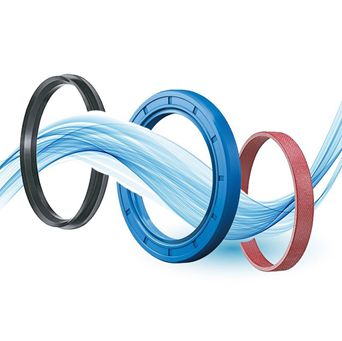Guide to oil seals for your application
Oil seals, also known as shaft seals or grease seals, are indispensable components in machinery and equipment, serving the critical function of preventing the leakage of lubricants and contaminants. As a crucial element in maintaining the efficiency and longevity of rotating equipment, selecting the right oil seal for your application is paramount.
1. Understanding the Basics:
What is an Oil Seal?
An oil seal is a mechanical seal designed to prevent the escape of lubricants, such as oil or grease, from within a machine or assembly. Simultaneously, it works to block contaminants from entering, safeguarding the internal components from damage or wear.
2. Components and Construction:
Materials:
Oil seals are typically constructed from materials that exhibit resilience, wear resistance, and compatibility with the lubricants they are intended to seal. Common materials include rubber compounds such as nitrile (NBR), fluorocarbon (Viton), and polyacrylate (ACM).
Lip Design:
The lip design of an oil seal is a crucial factor in its performance. The lip comes into direct contact with the rotating shaft, forming a dynamic sealing interface. Different lip designs, such as single lip, double lip, or multiple lips, cater to specific applications and sealing requirements.
3. Types of Oil Seals:
Radial Shaft Seals:
These are the most common type of oil seals and are designed to seal the gap between a rotating shaft and the housing bore. They come in various designs, including the widely used single-lip and double-lip configurations.
Axial Shaft Seals:
Axial seals, or face seals, are employed to seal along the axis of the shaft. They are often used in applications where the primary concern is preventing the leakage of fluids in the axial direction.
V-Ring Seals:
V-ring seals are mounted directly on the shaft and act as an effective barrier against dust, dirt, and splash water. They are popular in applications where space constraints limit the use of traditional radial shaft seals.
4. Selection Considerations:
Operating Conditions:
Consider the temperature, pressure, and speed at which the oil seal will operate. Different materials and designs are suitable for varying conditions.
Size and Fit:
Accurate sizing and proper fit are crucial for effective sealing. Ensure the dimensions match the specifications of your equipment, and pay attention to installation procedures.
Compatibility:
Verify the compatibility of the seal material with the lubricant used in the application. Certain materials may be more resistant to specific types of oils or chemicals.
5. Installation and Maintenance:
Proper Installation:
Follow manufacturer guidelines for installation, ensuring that the oil seal is correctly fitted and securely placed.
Regular Inspection:
Periodic inspections of oil seals are essential to identify wear, damage, or signs of leakage. Prompt replacement of worn-out seals helps prevent damage to internal components.
6. Common Challenges and Solutions:
Leaks:
Leaks can occur due to improper installation, worn-out seals, or incompatible materials. Ensure correct installation and choose seals suitable for the operating conditions.
Wear and Tear:
Regular inspections and timely replacement of worn-out seals mitigate the risk of damage to rotating equipment.
7. Conclusion:
Oil seals are the unsung heroes in the world of machinery, diligently performing the vital task of maintaining a sealed and lubricated environment. Choosing the right oil seal for your application involves a careful consideration of factors such as materials, design, and operating conditions. By adhering to proper installation procedures and conducting regular maintenance, you can ensure that oil seals play their part in enhancing the efficiency and longevity of your equipment.
58
0
0


Comments
All Comments (0)